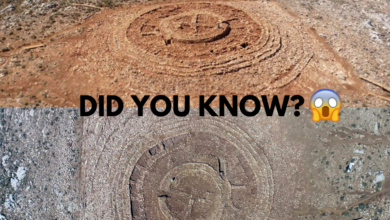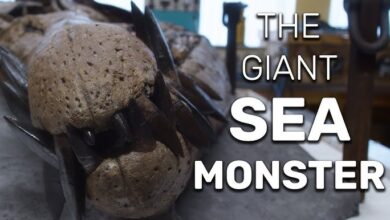Fishermen Captured Something Out Of This World In The Mariana Trench

Victor Vescovo, an American explorer, dived nearly 11 km into the Mariana Trench – a dark, deep and mysterious region on Earth. The trench, with its deepest point, the Challenger Deep, reaches a depth of 11,033 meters. This is where extreme pressure and cold temperatures create an environment that was previously thought to be inhospitable to life. However, expeditions have proven otherwise. Since 1875, the HMS Challenger discovered strange marine creatures here, opening a series of expeditions, including James Cameron’s trip in 2012, where he discovered bacteria that live by synthesizing minerals.
Strange creatures are constantly being discovered at this depth. For example, the kusk eel, which lives at a depth of 8,370 meters, has broken the previous record of the snailfish from the Mariana Trench. The snailfish, dubbed the “fantasy fish,” lives at a record-breaking depth of 8,336 m thanks to its remarkable evolutionary traits. Other discoveries include giant creatures like the xenophyophore amoeba, the Dumbo octopus, hatchet fish that glow with bioluminescence, and ancient frilled sharks – all demonstrating the extraordinary adaptability of life under extreme pressure.
In addition, recent discoveries by fishermen include a zombie worm that feeds on the bones of dead creatures at depths of 9,500 ft, and a telescope octopus with a transparent body and eyes on long stalks that allow it to observe without being detected. Notably, the comb jelly has also revealed information about the evolution of the human nervous system. These discoveries not only expand our understanding of life in the deep ocean, but also challenge biological limits that humans once believed were impossible.
Victor Vescovo has reached the bottom of the Mariana Trench – the deepest place on Earth at nearly 11 km deep. This dark and cold sea is home to strange creatures and amazing adaptations to survive in extreme pressure environments. One of the most remarkable discoveries is the snailfish, which lives at record depths thanks to its soft, boneless body structure, which helps it withstand great pressure.
Among the strange creatures is the “ping-pong tree” sponge, which stands at an impressive 20 inches tall. It is shaped like a tree covered in small balls, with small hook structures called “spicules” that capture prey when they accidentally touch it. The sponge then slowly digests the prey as it stretches.
The vampire squid, with its scary name, is neither an octopus nor a squid, but is distinguished by its dark red skin, large eyes, and “cloak” that resembles bat wings. Instead of using ink for defense, it secretes a glowing substance to distract predators. The barreleye, with its transparent head and tubular eyes floating in a green liquid, can rotate its eyes to see both forward and upward in the dark, helping it detect prey in the dark depths.
The dragonfish, which is only about 6 inches long, is a fearsome predator with sharp teeth and is nearly invisible. It emits bioluminescence to attract prey, before using its speed to attack. Giant amphipods, 20 times larger than their common relatives, have been discovered in the deepest parts of the ocean, surprising scientists.
In addition, ancient crinoids, which existed 480 million years ago, still live in this environment. The “sea lilies” cling to the sea floor, while the more agile “feather stars” can move around on soft arms to search for food. They demonstrate the remarkable evolutionary ability to survive in extreme conditions.
The region is not only home to strange creatures, but also produces mysterious sounds such as the “Western Pacific Biotwang” – a three-second metallic whine, and the “Bloop” – an extremely low-frequency sound that can be heard thousands of miles away. While some of the sounds have been explained by icebergs or glaciers colliding, they still leave many unanswered questions.
However, the Mariana Trench environment has also been heavily impacted by humans. Microplastics have been found at depths of over 10,000 meters, in surprisingly high concentrations. This not only threatens the ecosystem but also affects the food chain, including humans. These findings highlight the importance of protecting the ocean and the mysterious life within it.








